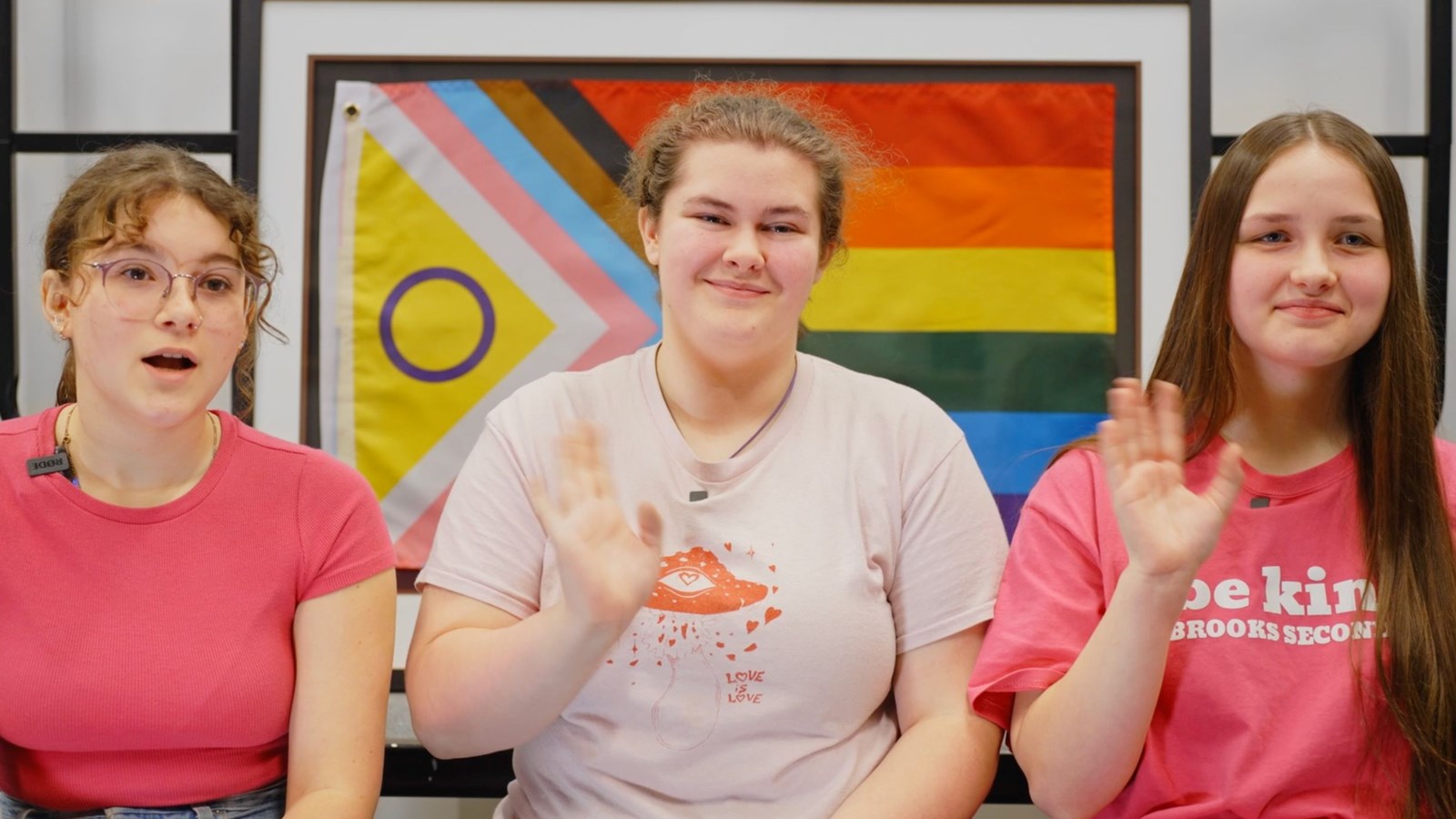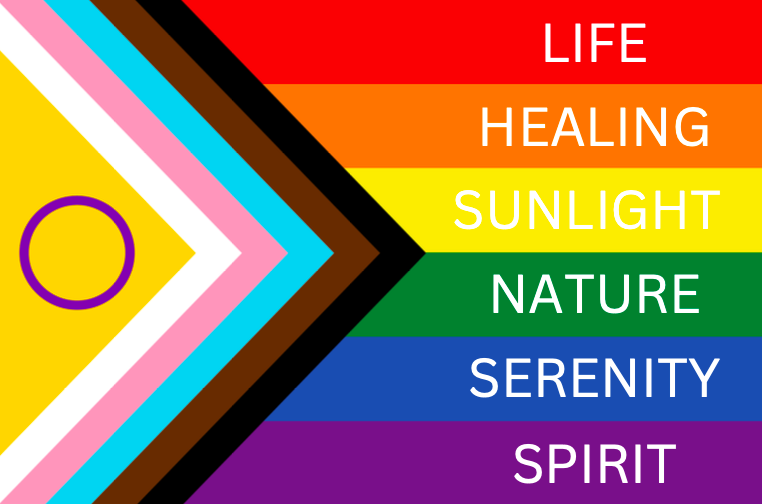Each School Gets Presented With a Pride Flag

Meet Roxanne, Maddy, and Abi, three members of the Brooks GSA (Gender and Sexuality Alliance) Committee, who took part in spearheading the initiative to install Pride flags at the entrance of each of our schools within qathet School District.
In this video, they explain the origin of Pink Shirt Day and how it all began from an act of kindness and the ambition of two grade 12 boys who refused to let a bully win, and why this day poses as the perfect opportunity to present the Pride flags to schools. They also discuss the meaning behind the Pride flag and how it serves as a beautiful symbol of welcome and safety for students, staff, and families. Lastly, they share the hope they have with these flags: for students to feel proud that their school makes space for everyone.
A little bit of the backstory behind the Intersex-Inclusive Progress Pride Flag…
In 2023, the Brooks Secondary Gender & Sexuality Alliance (GSA) asked that the School District display this flag at the entrance to each of our schools to demonstrate its commitment “to ensuring a safe, inclusive, equitable, and welcoming environment for all members of the school community, regardless of real or perceived sexual orientations, gender identities, and gender expressions” (qathet School District Administrative Procedure 176). This flag was chosen by the students because rainbows are a symbol of joy and hope; when it rains and you see a rainbow, it indicates that the sun is coming out. A rainbow is a new beginning and is beautiful because of its many colours. All qathet School District students, staff members, and visitors will be welcome and supported here to fully shine - no matter what their sexual orientation, gender identity, or gender expression might be.
The history and symbolism of the flag itself are important to acknowledge. The rainbow flag, originally designed by Gilbert Baker, is a symbol of pride and community. It was first displayed at the San Francisco Gay and Lesbian Freedom Day Parade on June 25, 1978. The first flags were hand-dyed and stitched for the parade, and two of them were later hung in the United Nations Plaza in San Francisco “to highlight the acceptance and equality of sexual and gender minorities as both a global struggle and a matter of civil rights... Baker admired the universality of the rainbow, which he called a ‘natural flag in the sky’” (MoMA.org). The Progress Pride flag is an updated version created in 2018 by non-binary artist Daniel Quasar, and the current version seen here was created in 2021 by Valentino Vecchietti. Each set of changes/additions to the flag have been efforts to make the flag as inclusive as possible.
The different colours on the flag have specific meanings: 
The white, light pink and light blue are the colours of the transgender flag and are meant to represent the trans community.
The brown and black are meant to represent people of colour within the community. The black stripe also represents "those living with HIV/AIDS and the stigma and prejudice surrounding them, and those who have been lost to the disease" (Daniel Quasar).
The yellow triangle with the purple circle is the intersex symbol, representing people born with variations that don’t fit expectations of a male or female body.

Pictured left to right: Dale Lawson, Maureen Mason, Kirsten Van't Schip, Jaclyn Miller, Jay Yule, Rob Hill, and Steve Hopkins.
Thank you to the District’s unwavering support and the Brooks Secondary Gender & Sexuality Alliance (GSA) for leading this initiative and helping create a brighter, more inclusive future for everyone.



